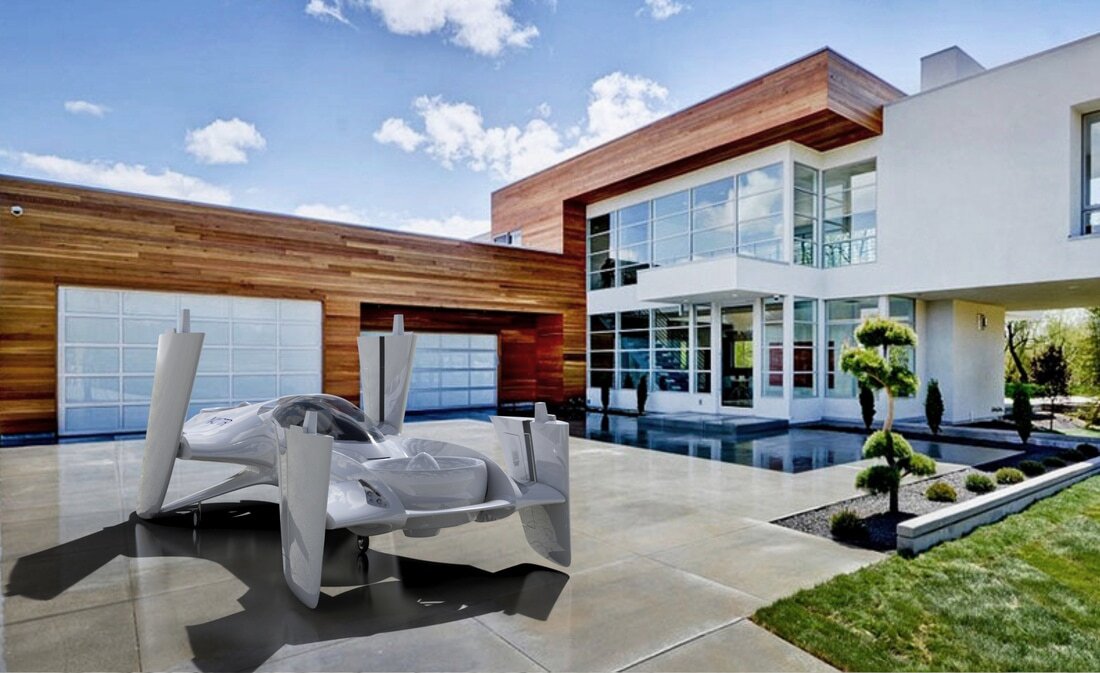DeLorean is a name associated with a certain brushed stainless steel supercar, but now it's being added to aircraft. DeLorean Aerospace is developing a two-person VTOL aircraft called the DR-7 that combines rotating ducted lift/propulsion fans with an autonomous flight control system, allowing it to be flown by a minimally trained pilot.
DeLorean Aerospace was founded in 2012 by Paul DeLorean, the nephew of John DeLorean, the automotive industry executive who founded the DeLorean Motor Company whose only model was the now famous DMC-12 piloted by Doc Brown in the Back to the Future films. Although that car flew at the end of the first film in the trilogy, the DR-7 is intended to make a flying DeLorean a reality.
With its short, foldable wings and canards, the DR-7 is designed to be "compact, lightweight, and deceptively simple." It measures 19.5 ft (6 m) long and has a wingspan of 18.5 ft (5.6 m), but the wings fold to give the vehicle a width of 7.5 ft (2.3 m), allowing it to fit in a home garage or parking space. It would boast a composite monocoque fuselage with tandem seating and features a stall-resistant canard wing.
What really sets the DR-7 apart from other flying car designs are a pair of centerline, 360-degree thrust-vectoring electric ducted-fan nacelles, which the company says are simpler and cheaper compared to similar multi-engine designs, yet provide better performance, reliability, and greater stability. In addition, the autonomous flight system has a manual mode to suit the desires of more experienced aviators.

The fans at the heart of he vehicle's centerline twin vectoring propulsion system (CTV) are used for both propulsion and control. In horizontal mode, they provide lift and hovering capabilities, and allow the aircraft to operate from short air strips. In vertical mode, they propel forward flight. And by tilting the fans in coordination, they can also replace the conventional ailerons and rudder to reduce drag.
DeLorean says that the rechargeable electric powertrain would provide the DR-7 with a top speed of 240 mph (386 km/h) and see it cruise at 150 mph (241 km/h) for a range of 120 mi (193 km).
A patent-pending failsafe system is designed to deal with power emergencies in hover or forward flight, and the company sees the DR-7 as suitable for private use or as urban air taxis. No word yet on when it will fly or how much it will cost, but two scale models have been constructed as a proof of concept and a full-size piloted prototype is now in the works.
Source: DeLorean Aerospace













